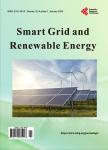Community Smart Grid Utilizing Dynamic Demand Response and Tidal Power for Grid Stabilization
Community Smart Grid Utilizing Dynamic Demand Response and Tidal Power for Grid Stabilization作者机构:College of the Atlantic Bar Harbor USA Department of Mechanical Engineering University of Maine Orono USA. Department of Mechanical Engineering University of Maine Orono USA
出 版 物:《Smart Grid and Renewable Energy》 (智能电网与可再生能源(英文))
年 卷 期:2013年第4卷第7期
页 面:465-472页
学科分类:1002[医学-临床医学] 100214[医学-肿瘤学] 10[医学]
主 题:Smart Grid Tidal Power Renewable Energy Micro Grid
摘 要:Conventional electricity generation is one of the largest contributors to climate change. Renewable energy sources are a promising part of the solution but uncertainty combined with a lack of controllability prevents renewable sources of power from being direct substitutes of conventional energy sources. This shift towards a higher penetration of renewable energy into the electric grid can be realized with the implementation of a more sophisticated smart grid, which uses dynamic demand response to alter demand on following generation. Research on renewable energy penetration of the grid predominately focuses on wind and solar power resources but demand cannot always match availability from these sources and therefore greatly increases the need for energy storage. Tidal power differs from solar and wind. It’s a predictably renewable resource which makes it extremely valuable even on a relatively small scale. Introduction of tidal power in a high penetration micro-grid can serve to stabilize the grid and reduce the amount of storage required. Widely different time scale for wind, solar and tidal power availability results in low cross correlations and therefore increases stability. This research describes an incremental approach to migrating a grid-tie island towards the formation of a smart-micro grid. The system will include a high penetration of three distributed generation systems, wind, solar and tidal and utilize commercially available energy storage and a smart-home management controller. Dynamic demand response through load balancing is implemented to minimize interactions with the electric grid. A second component of this work is to determine the optimum tidal generation capacity for the micro grid such that needed storage capacity from batteries or the utility grid is minimized.



